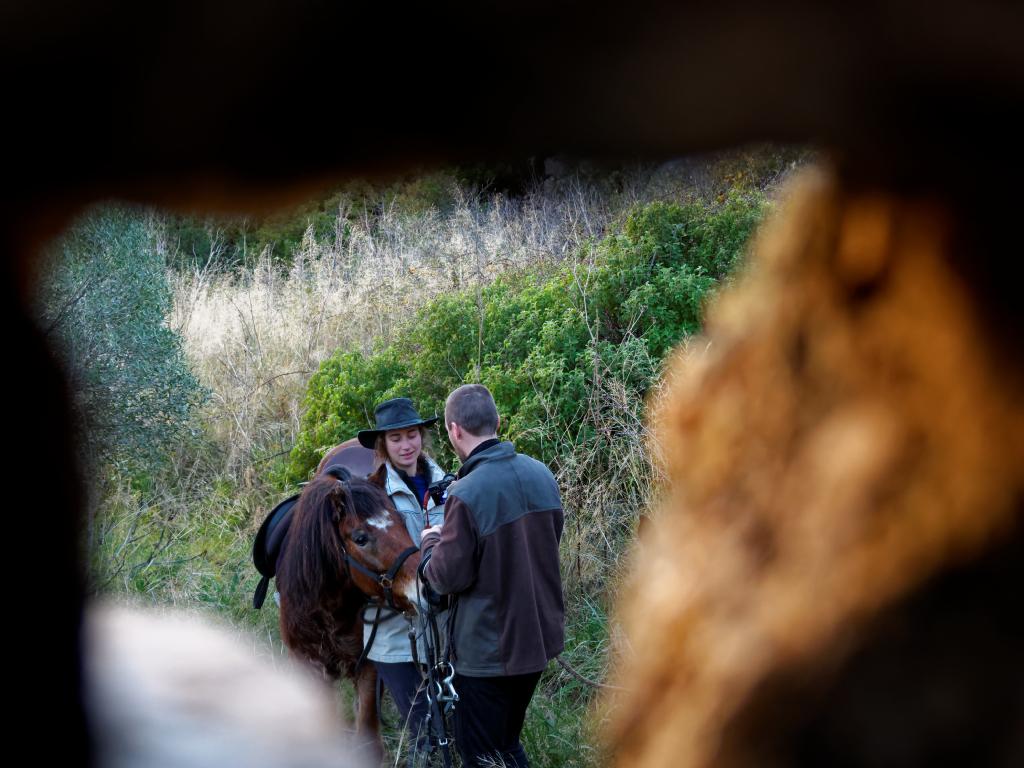
Trekking the Trans-Albanian Trail: 600 KM Across Albania on Horseback
What happens when two regular riders decide to trek 600 kilometers on horseback across one of Europe’s least known countries? Meet Ashley and Quentin, who introduce their adventure today.
Where?
This is the question most people ask us when we tell them we’ll be riding 600km (almost 400 miles) across Albania this spring.
“Albania! The forgotten gem of the Balkans? Between Montenegro and Greece? Liberated from a communist dictator in 1992?”
For this we get blank stares, usually followed by, “But why do you want to ride there?”
Why does anyone set off on an unassisted horse trek through rustic and wild lands? For the love of adventure, nature, and a passion for horses, naturally!
The beginnings
We are Ashley & Quentin, creators of En Selle, French for “In the Saddle.” We left our Parisian office jobs to travel the world by bicycle and horseback. Ashley is a lifelong rider and has competed in eventing and show-jumping in the US and France. Quentin is an intermediate rider, but lots of experience in other outdoor sports and has picked up riding quite handily over the past 18 months. After cycling over 2500km this winter from France to Albania, we are preparing to stash our bikes in a friend’s garage and change our mode of travel from two wheels to four hooves.
The Albanian landscape is much more adapted to horses than it is bicycles. The most beautiful roads are still the routes that have been used by merchants and shepherds for centuries. This means the trails can be muddy, bumpy, rocky, slippery, cliffside, steep, and narrow.
In Albania, only a few areas are presently tourist hot spots – its stunning coastline along the Adriatic Sea, and its mountainous national parks, like those in Permet (the south) and Valbona (the north). The rest of the country is relatively unvisited by tourists, and many villages are difficult or impossible to reach by car. Much economic activity is still based on agriculture, and the land is teeming with horses. The country has its own tough little breed, the Albanian horse. Strong, nimble and adapted to the terrain, these horses are excellent for navigating the tricky terrain, and promise to be the partners we need to ensure a successful trek.
We also chose Albania because we are fascinated by its people. Albanians are known for their hardiness, hospitality, and humor. Hospitality to foreigners is of the highest importance here and they are excited rather than bothered to find strangers riding on or near their land.
Our journey will begin in mid-May, and the trek will span six weeks, approximately 100 km per week, with two back-to-back recovery days each week. Three horses will be our partners for this journey, two for riding and one to carry grain and camping gear. At the end of the trek, our horses will be donated to the TOKA organization, a local NGO that is assisting locals in the Tropoje region to set up their own businesses. Our horses will join their budding equine tourism project, where we know they’ll be fat and happy for the rest of their days. We will be sharing our adventures (and misadventures) on Horse Nation over the coming weeks.
When you find us next:
We’ll be on the horse hunt in the southern province of Gjirokaster. In this area we have managed to locate two breeders of Albanian horses, one of whom proudly promised that at least five of his horses have already been ridden. We’ll share how we chose the route, got our tack and gear here, and check in on how we’re getting the horses fit and ready for departure.
We are excited to bring Horse Nation readers along with us on this once-in-a-lifetime ride and maybe inspire some of you to embark on your own equine adventures outside the arena. If you have any questions, leave them in the comments and we’ll try to answer them or include them in the next post!










Leave a Comment